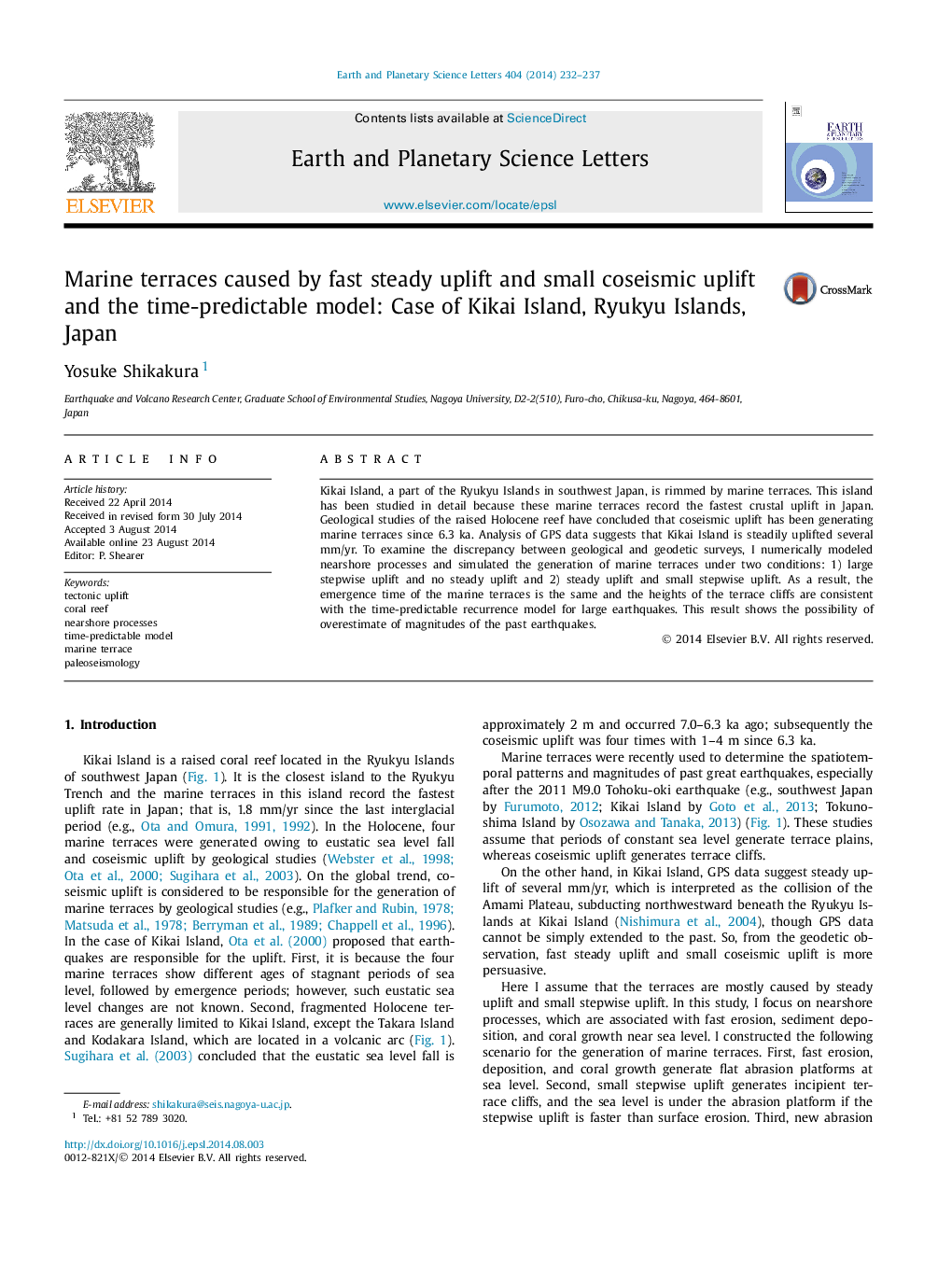| Article ID | Journal | Published Year | Pages | File Type |
|---|---|---|---|---|
| 6429031 | Earth and Planetary Science Letters | 2014 | 6 Pages |
â¢GPS data show steady crustal uplift at Kikai Island, rimmed by marine terraces.â¢Geological studies have suggested that coseismic uplift has created Kikai Island.â¢I modeled nearshore processes and calculated the development of marine terraces.â¢Computations show steady uplift and small coseismic uplift can generate terraces.â¢The computed terraces are consistent with the time-predictable model.
Kikai Island, a part of the Ryukyu Islands in southwest Japan, is rimmed by marine terraces. This island has been studied in detail because these marine terraces record the fastest crustal uplift in Japan. Geological studies of the raised Holocene reef have concluded that coseismic uplift has been generating marine terraces since 6.3 ka. Analysis of GPS data suggests that Kikai Island is steadily uplifted several mm/yr. To examine the discrepancy between geological and geodetic surveys, I numerically modeled nearshore processes and simulated the generation of marine terraces under two conditions: 1) large stepwise uplift and no steady uplift and 2) steady uplift and small stepwise uplift. As a result, the emergence time of the marine terraces is the same and the heights of the terrace cliffs are consistent with the time-predictable recurrence model for large earthquakes. This result shows the possibility of overestimate of magnitudes of the past earthquakes.
